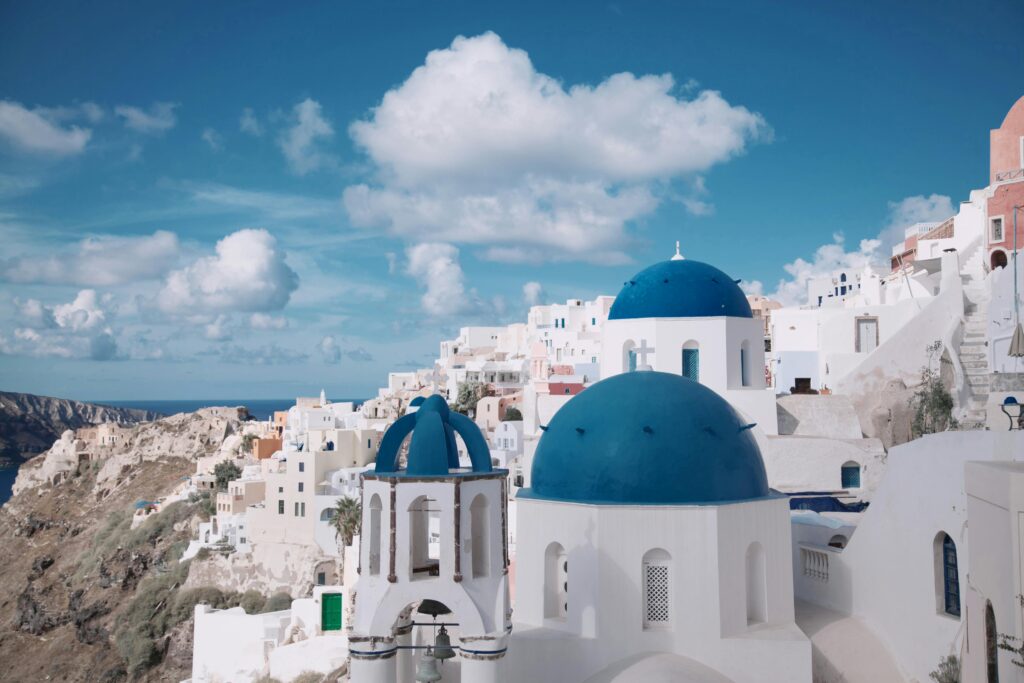
Cruise enthusiasts and industry insiders are taking note as several popular cruise destinations around the world announce or implement increases in their port fees. From the picturesque islands of Santorini and Mykonos in Greece to tropical gems like Cozumel and Nassau, these new fees may impact everything from cruise fares to passenger experiences. Here’s a closer look at which cruise ports are raising fees and what it means for travelers.
1. New Zealand: Sustainability at the Forefront
New Zealand, known for its stunning landscapes and rich cultural heritage, has been a growing favorite among cruise-goers in recent years. However, the country has made sustainability a priority, and part of that focus has led to an increase in port fees. Starting on Dec 1st, border processing fees will go up 88%. New Zealand’s government is looking to manage the environmental impact of mass tourism by investing in the preservation of natural habitats and infrastructure upgrades. Cruise operators will likely adjust their itineraries or raise fares to offset these higher fees, so expect the cost of cruises to New Zealand to rise as a result.
2. Santorini, Greece: Controlling the Crowds
Santorini, famous for its stunning sunsets and whitewashed buildings, has long struggled with the overwhelming volume of cruise passengers disembarking during peak seasons. To protect the island’s delicate infrastructure and improve the experience for both visitors and residents, authorities will like to implement less peak days and a cap of 8,000 cruise passengers that can visit in a single day. This policy shift, combined with a rise in port fees, is designed to mitigate overtourism. While this may reduce the number of available cruises to Santorini, it could also enhance the quality of visits with fewer crowds, making for a more exclusive and enjoyable experience.

3. Mykonos, Greece: Enhancing Island Infrastructure
Another Greek island raising port fees is Mykonos. Known for its vibrant nightlife and beautiful beaches, the island is a top destination for luxury cruises. However, as cruise ship arrivals continue to surge, Mykonos has faced increasing pressure on its local infrastructure. In response, authorities are boosting port fees to $22 during peak summer months (as well as in Santorini) to fund improvements such as better docking facilities and enhanced transportation services for tourists. While these changes are aimed at ensuring long-term sustainability, cruise lines may pass these additional costs on to passengers, meaning travelers should prepare for higher cruise fares to this popular Greek destination.
4. Cozumel & Costa Maya, Mexico: Investing in Tourist Infrastructure
Two of Mexico’s most popular cruise destinations—Cozumel and Costa Maya—are also raising their port fees. These ports are key stops on Caribbean itineraries, particularly for American travelers seeking sunny escapes. The increased fees of $5 per person starting in 2025 is part of broader efforts to enhance infrastructure and maintain the quality of tourism services amid growing visitor numbers.
Cozumel, with its crystal-clear waters and vibrant coral reefs, continues to see a surge in tourism, particularly among snorkeling and diving enthusiasts. Costa Maya, on the other hand, is growing as a cultural destination, offering more excursions to ancient Mayan ruins. The higher fees will likely be used to support new developments and preserve the natural beauty that makes these ports so popular.
5. Barcelona, Spain: Balancing Growth and Sustainability

As one of Europe’s busiest cruise ports, Barcelona has become a gateway for Mediterranean adventures. However, the city’s government has been facing pressure to manage overtourism and the environmental impact of large cruise ships docking in the heart of the city. With this in mind, Barcelona wants to increase its port fees for those staying less than 12 hours as part of a broader strategy to control the volume of visitors while still supporting the local economy.Currently the tax is $7.61
The fee hikes are aimed at striking a balance between tourism growth and sustainability. In recent years, Barcelona has invested in new port infrastructure to accommodate larger ships while also implementing measures to reduce the environmental footprint of cruise liners. As a result, travelers to Barcelona can expect some of these costs to be reflected in cruise prices, but the long-term aim is to improve the overall experience by reducing congestion and enhancing sustainability.
6. Nassau, Bahamas: A Facelift for the Caribbean Classic
Nassau, one of the busiest cruise ports in the Caribbean, is in the process of completing major renovations to its port area. With new facilities, retail shops, and entertainment areas planned, Nassau is positioning itself to offer a more premium experience to cruise passengers. To fund these developments, port fees increased from $18 to $23.
These fee hikes come alongside improvements meant to provide a better overall experience for visitors. Given Nassau’s significance as a stop for many Caribbean cruises, these fees could affect a large number of itineraries. However, the planned upgrades should make future visits to Nassau more enjoyable and streamlined. The same tax has also been added to the ports of Bimini and Freeport
What The Rising Cruise Port Fees Means for Cruisers
The rising port fees across these global destinations signal a shift toward more sustainable tourism practices and better infrastructure to accommodate the growing number of cruise passengers. For travelers, this could lead to an increase in cruise prices, especially for itineraries including multiple high-fee destinations. However, there is also a potential upside: fewer crowds, better facilities, and more eco-conscious travel.
Cruise lines may respond by adjusting their itineraries to include fewer high-fee ports or by spreading the cost across passengers. However, for those who prioritize quality over quantity, the enhancements at these destinations—such as upgraded facilities in Nassau or controlled visitor numbers in Santorini—could make the slightly higher prices well worth it.
Ultimately, as the cruise industry adapts to these changes, travelers should keep an eye on upcoming cruise deals and pay attention to how their chosen destinations are handling port fee increases.
So, whether you’re setting sail to the Caribbean, the Mediterranean, or the stunning shores of New Zealand, it’s important to be aware of how these changes might shape your next adventure.
What do you think of these new fees and the state of over tourism? Share your thoughts with me in the comments below!

If you found this post helpful, please feel free to share on Facebook or Pinterest. Thanks so much! Happy Cruising!







